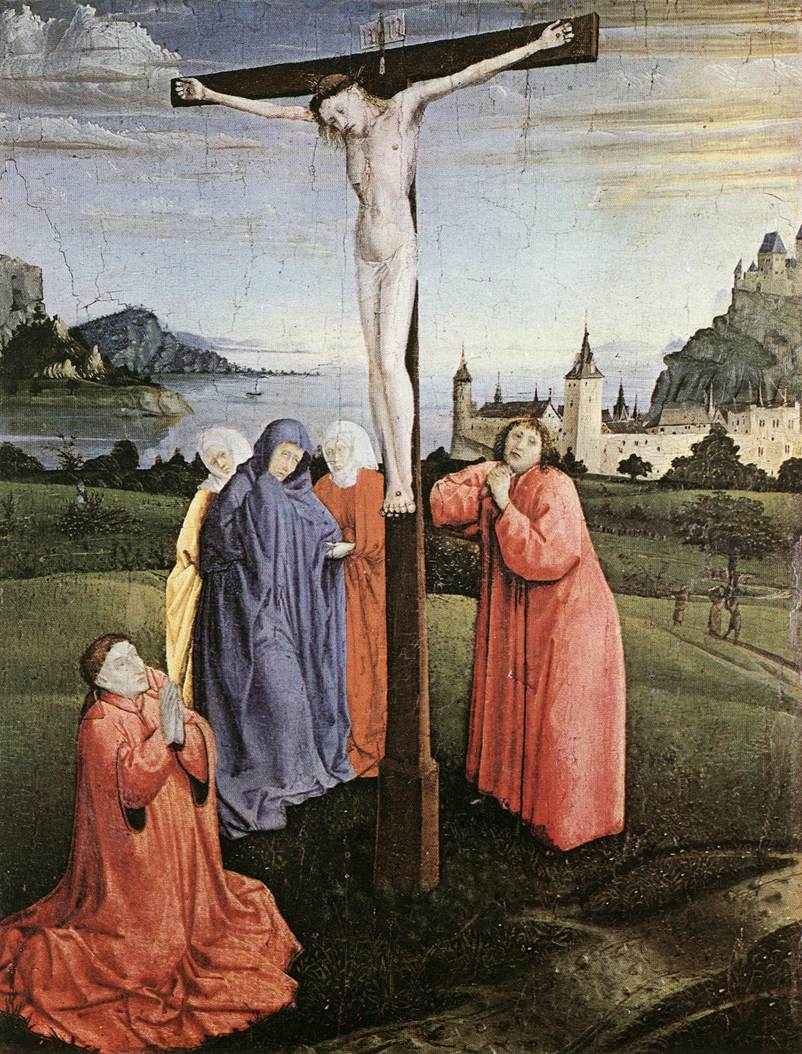Description
The painting "Christ on the Cross" by the artist Konrad Witz is a masterpiece that captivates with its unique artistic style and emotional composition. With an original size of 34 x 26 cm, this little jewel manages to convey a great emotional and spiritual charge.
Witz's artistic style is characterized by detailed realism and his ability to capture beauty and human expression. In "Christ on the Cross" the artist succeeds in depicting the suffering of Christ in a touching and realistic way. Every detail, from the nails in the hands and feet to the wounds in the side, is rendered with astonishing precision.
The composition of the painting is another highlight. Witz uses unusual perspective, placing Christ on the cross at a diagonal angle, which creates a sense of depth and movement in the scene. Furthermore, the artist uses the "golden triangle" technique to distribute the elements of the painting in a balanced and harmonious manner, adding a sense of stability and serenity despite the tragic subject matter.
When it comes to color, Witz uses a limited but effective palette. Dark and earthy tones predominate, which reinforces the sensation of pain and suffering. However, the artist also uses small touches of more vivid colors, such as the red of Christ's mantle and the blue of the sky, to highlight certain elements and create striking visual contrasts.
The history of the painting "Christ on the Cross" is fascinating. It is believed to have been created around 1440, making it one of the oldest depictions of the crucifixion of Christ in European painting. The work was commissioned for a hospital chapel in Geneva, Switzerland, demonstrating its religious importance and its purpose to inspire devotion and spiritual reflection in viewers.
Although its original size is relatively small, the painting has been widely recognized and admired for its artistic quality and its ability to convey the passion and suffering of Christ. Despite its relative obscurity compared to other Renaissance masterpieces, Konrad Witz's "Christ on the Cross" deserves appreciation for its technical skill, its emotionality, and its contribution to art history.

